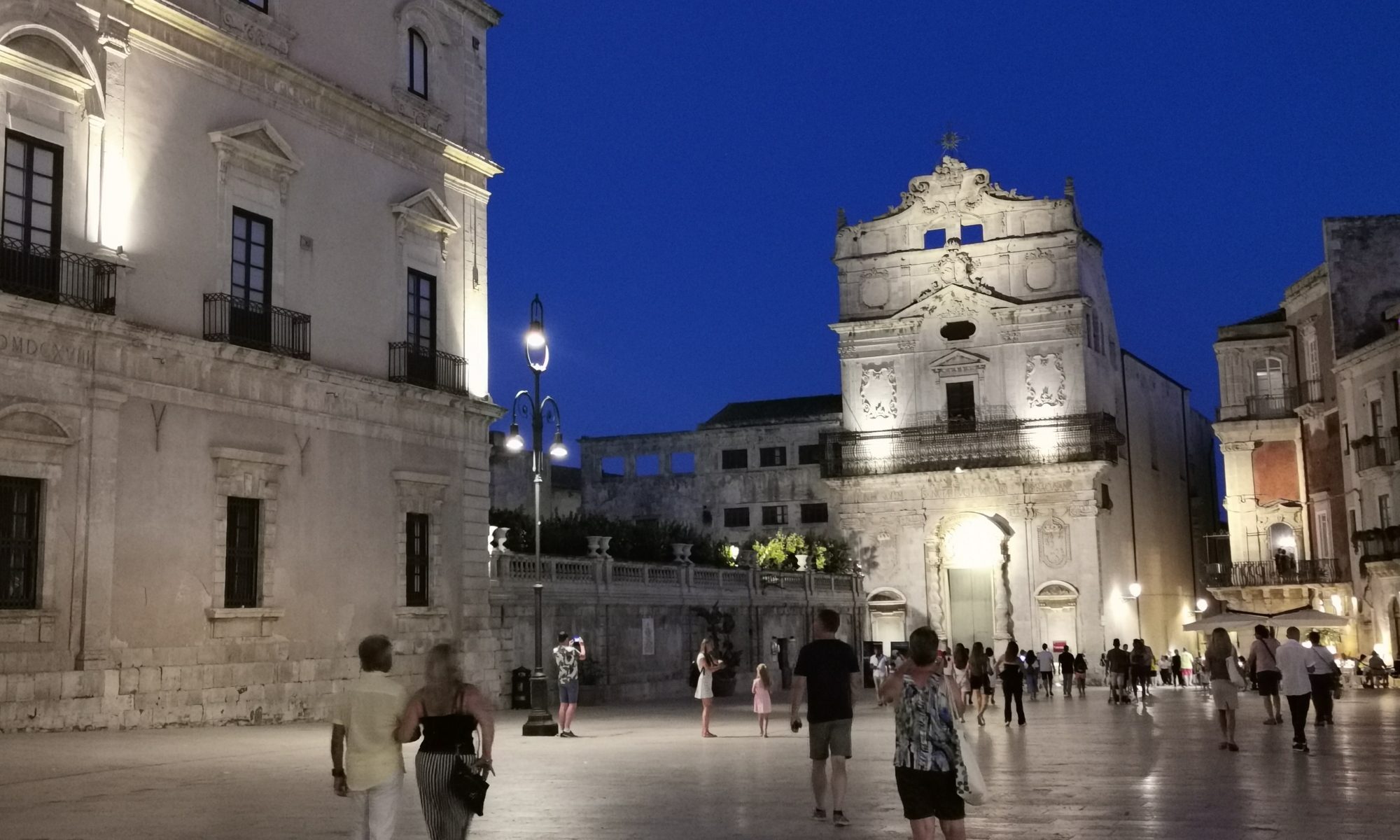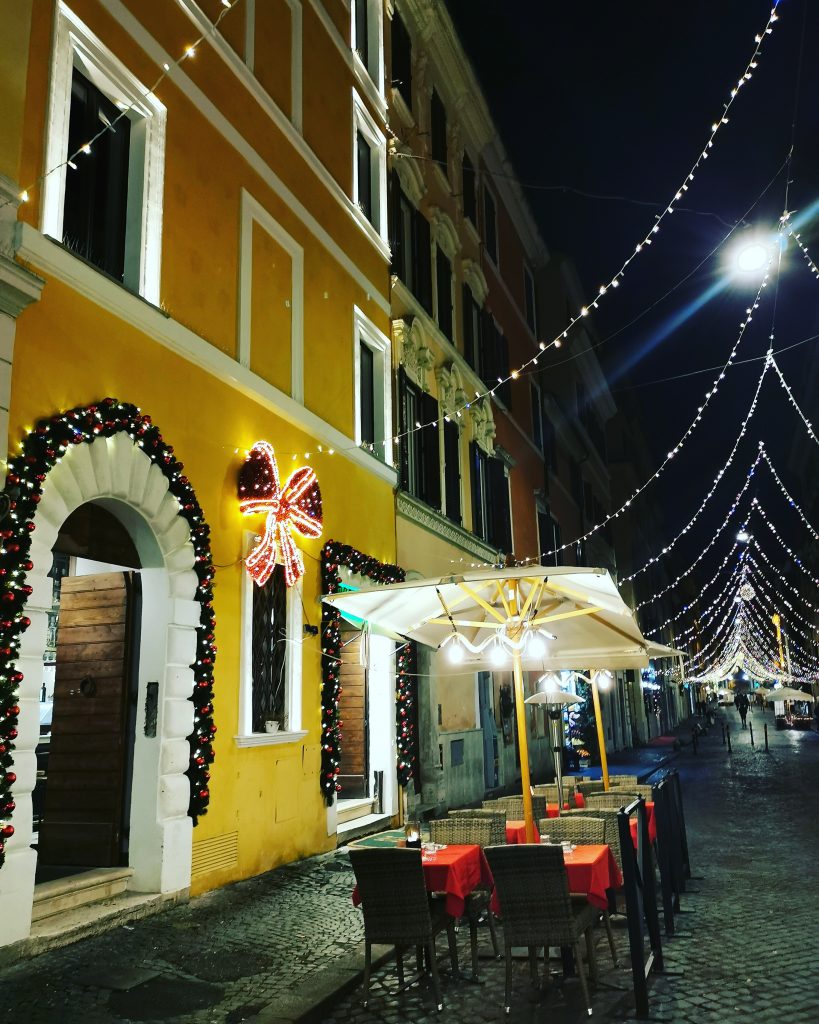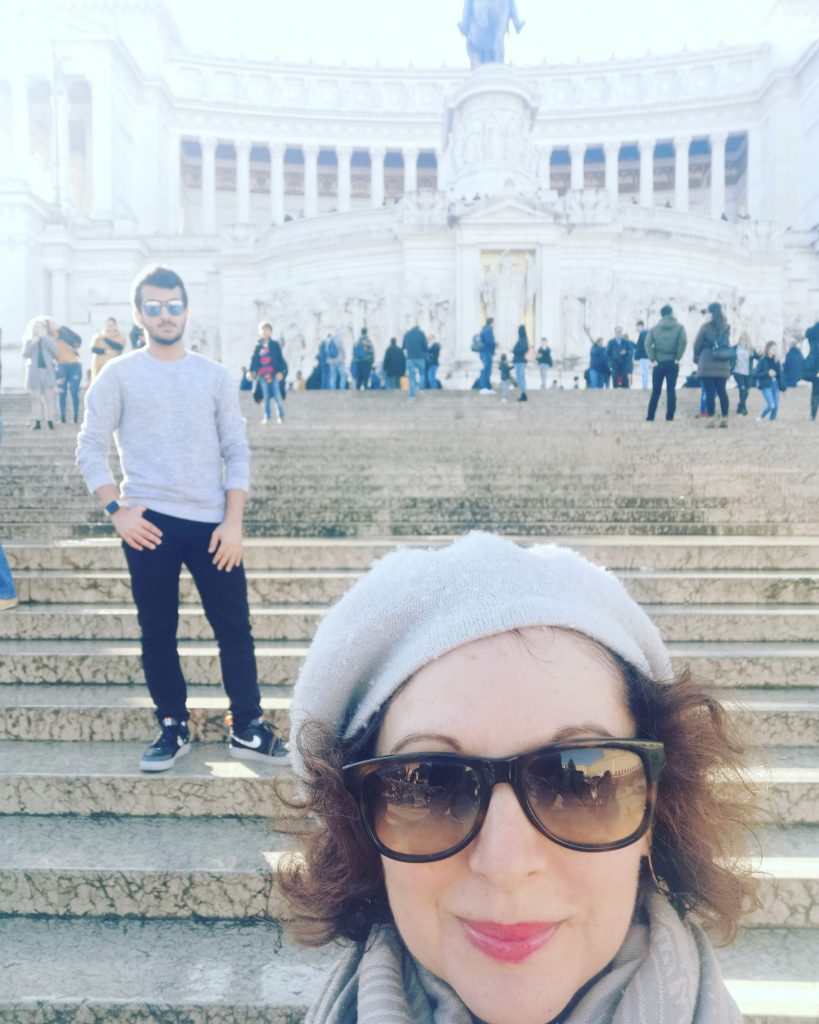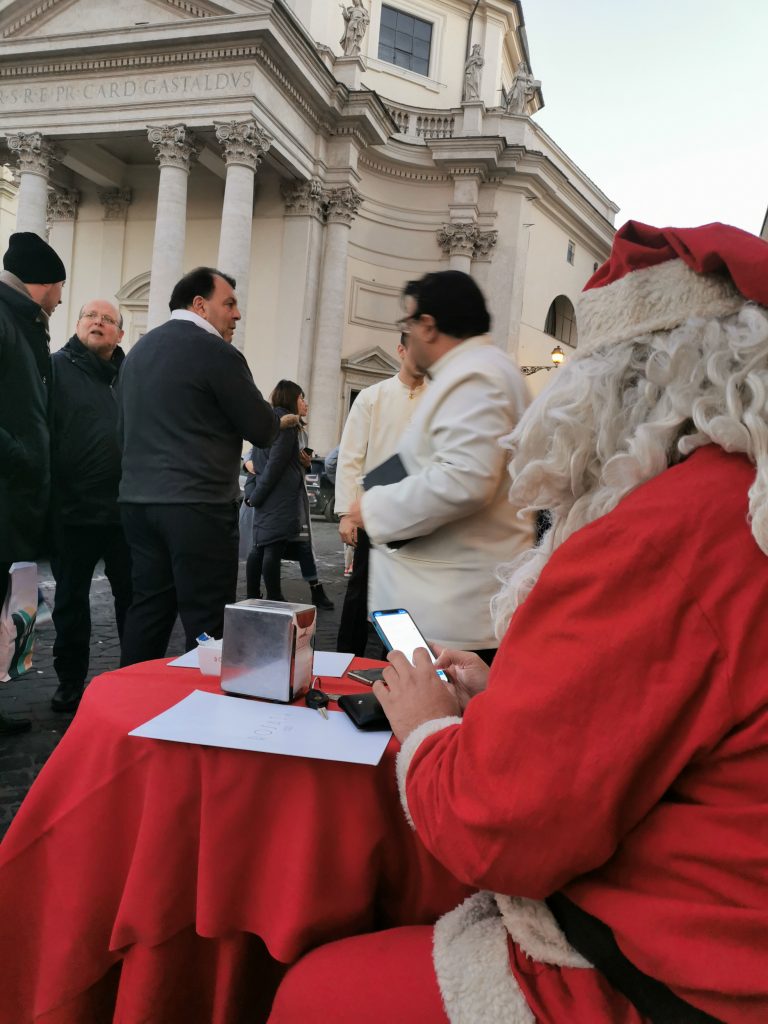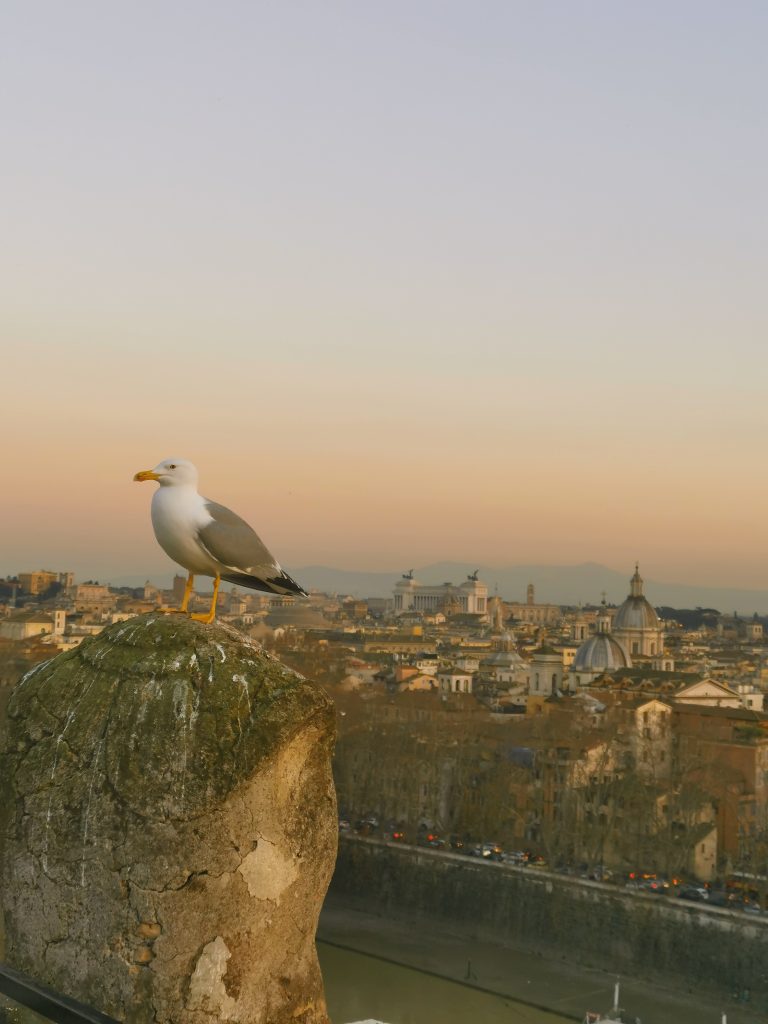Timing has never been my strong point. I decide to start a travel blog, the world decides to raise me a global pandemic. I never did get to the Northern Lights last month, but I’m damned if Coronavirus is going to stop me making it to Palermo for my birthday. Fading glamour elegantly interspersed with clapped out bits you can’t be bothered to rebuild? This is a city made to turn 47 in.
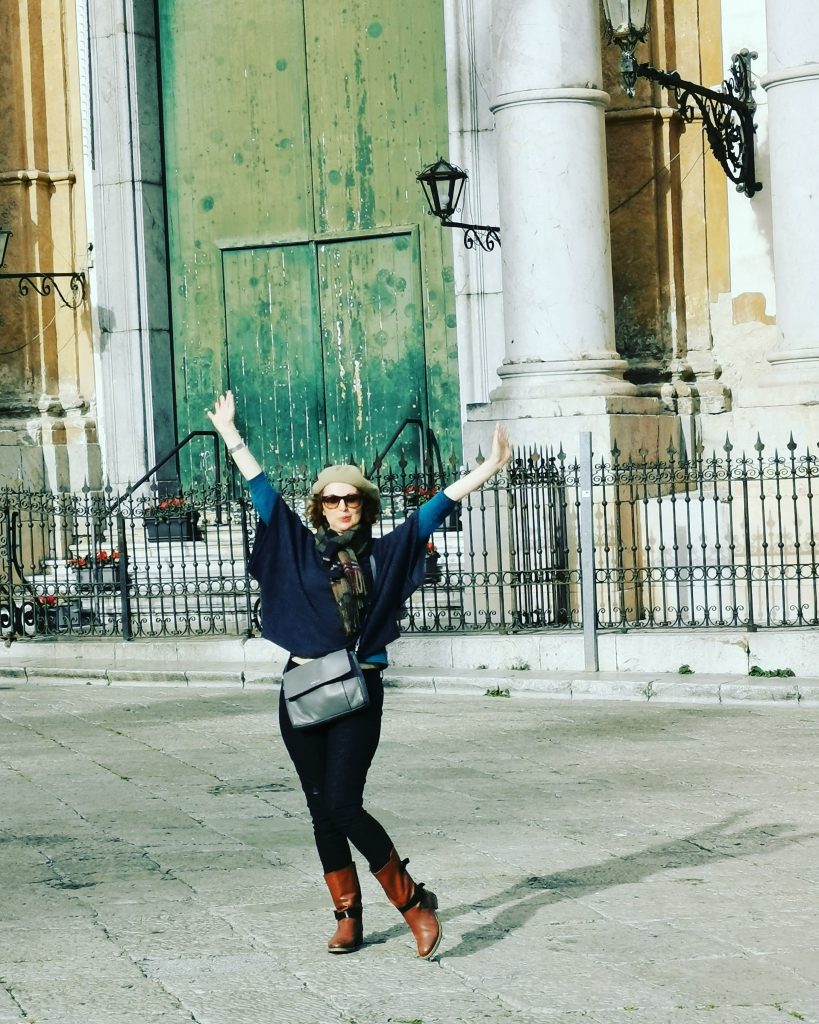
This time I’m travelling with my friend Chris who has both good Italian and an excellent sense of direction, something of a boon when you’re abroad with yours truly. We fly out from Stansted, which ironically boasts the only Boots in South East England that is still stocking antiseptic wipes and hand sanitiser. The woman behind the counter tells me she’s just sold 50 quid’s worth to someone on their way to Lanzarote, so it’s good to hear we’re all keeping our sanity.
On the flight over we sit next to Giovanni, a well-heeled Palermitan who is in his early 70s and clearly has the imp of mischief on his shoulder. He tells us he is a leather merchant in Bollaró Market and points at his squinting eye, which is presumably code for watch you don’t get your handbag nicked. He later takes us through the various other Italian hand gestures on offer which is particularly useful for me as a non-speaker. The wrist-flicking ‘whaddya want from me?’ I have seen a number of Italians perform in traffic over the years, but the rotating finger in the cheek is a new one and it means ‘it’s delicious’. Sadly this doesn’t stretch to the Ryan Air paninis, but it’s bound to come in handy over the coming days as I mainline caponata.
A strong tail wind means we arrive half an hour early and we’re greeted by four men in Red Cross jumpsuits who are here to do a temperature check. For a peri-menopausal woman this is a minefield and I am relieved to pass through with ease. Our bus drops us off very late at Palermo station and it is so eerily quiet it looks as though there should be tumbleweed blowing across its shiny marble floors. Luckily our Airbnb isn’t far away and we find ourselves in the much livelier neighbourhood of La Kalsa where the young Palermitani are at play, nibbling on chick pea fritters and swigging bottles of Moretti. Stylish bastardos.
We’ve only made one pre-booking here and it’s to see the Palazzo Conte Federico which has two tours a week on a Saturday. These small, private showings are conducted by the Contessa who greets us Eva Peron style at a wrought iron balcony which forms part of the palm-tree filled courtyard. We gaze up in awe of her piss elegance and she proceeds over the next hour to ladle out charm and wit like Joanna Lumley on steroids. The Contessa is whippet thin with a French Riviera face and expensive blond hair and she definitely knows her way around an artichoke. I decide that I want to be her.
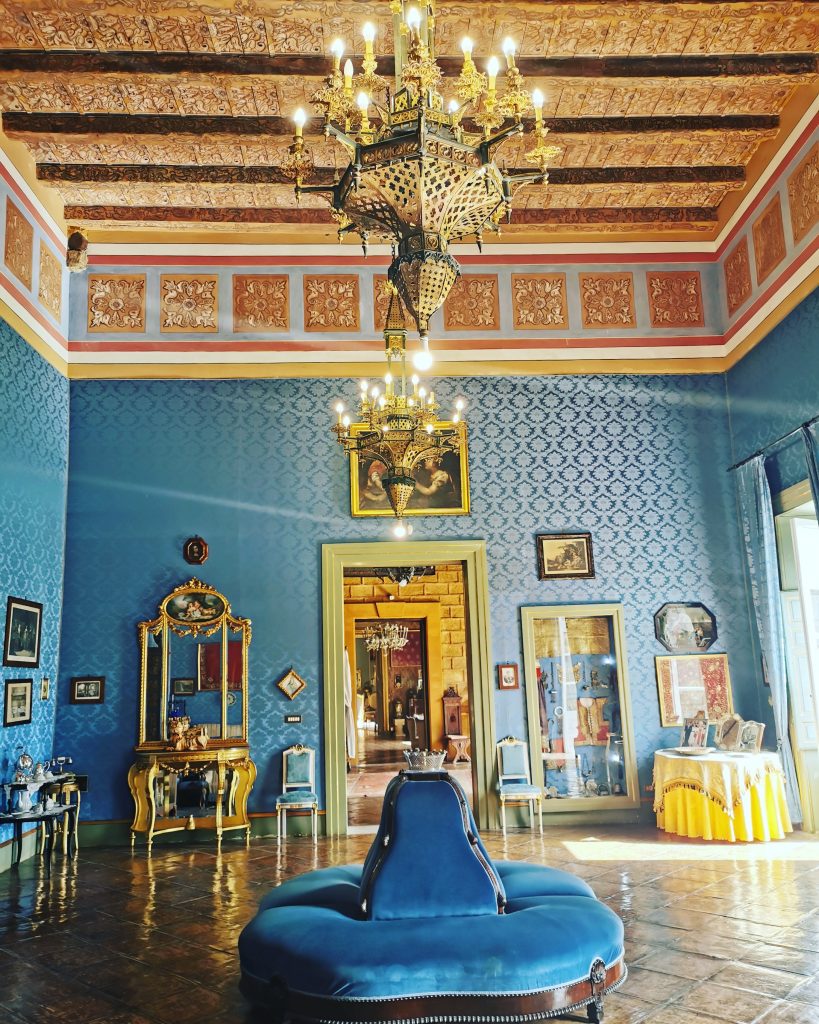
The group are mostly Italians with one heavily made up American in platform boots who is at great pains not to touch anything. We quickly learn that the Contessa is a native of Salzburg, is passionate about music and can speak three languages perfectly. She asks me if I’m French (more brownie points) and is relieved when she hears I’m not as apparently her French ‘isn’t great’, something that of course no-one believes.
The Palazzo really is their home and the Contessa shows us her bedroom with its bottles of perfume on the dressing table and her study with its vintage fur coat draped over the chair for chilly afternoons (chilly by Sicilian standards which means anything south of 18 degrees draws much complaint). A cat snoozes on an incongruous IKEA recliner and next to it is a grand piano that was once played by Wagner when he was a guest of the family in 1882. Above our heads an opalescent Murano chandelier out-blings anything I’ve seen in Venice.
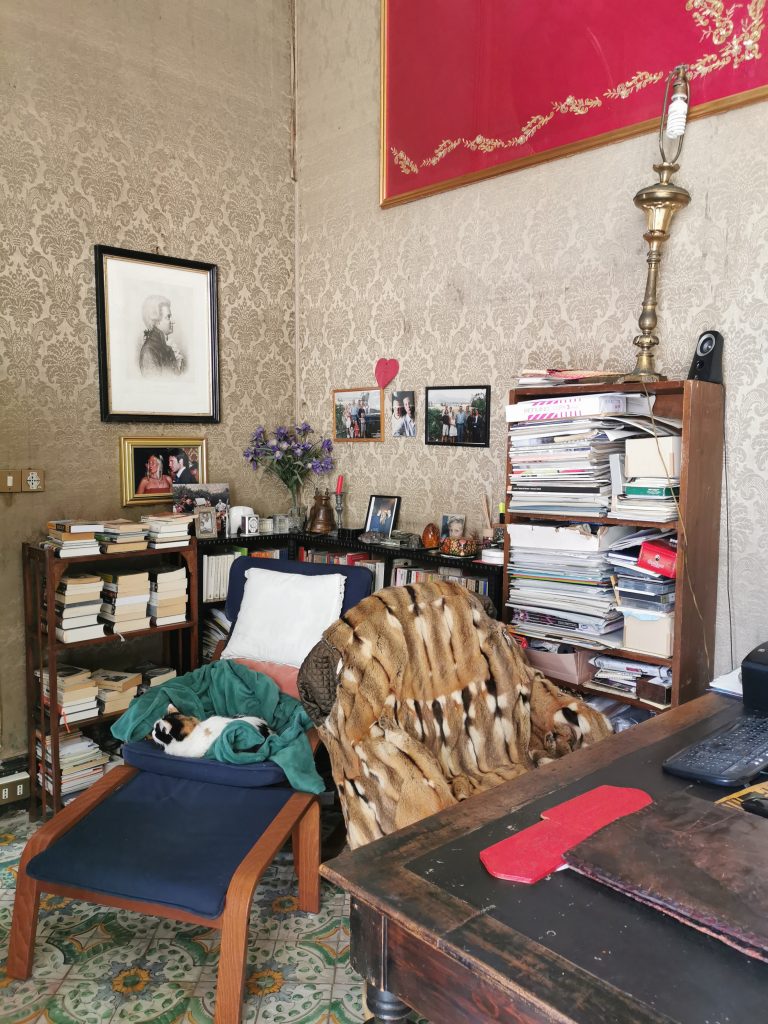
The Conte, a descendant of Frederick II, a 13th Century King of Sicily, is clearly a competitive sort and amongst the baroque drama of the rooms are festooned his many sporting medals, intertwined with the Contessa’s swimming accolades because naturally she’s also a mermaid. As in aristocratic homes the world over there are silver-framed family photographs on every available surface, many of them showing the Conte holding cups aloft or climbing victoriously out of red racing cars. We learn later from online snooping that the couple met when she was singing at a ball at the Austrian Embassy in Rome. Smitten, he followed her to China where she was studying and, though she could barely understand a word of Italian, she soon got the gist when he went down on one knee and proposed with the family engagement ring.
I am suddenly reminded that today is a leap year and I offer to propose to Chris who I know is just desperate for an Irish passport. We’re tempted to announce this on Facebook with a specially staged photograph. Perhaps next to one of the more blousy statues in Piazza Pretoria where Neptune is blowing his horn. SURPRISE!
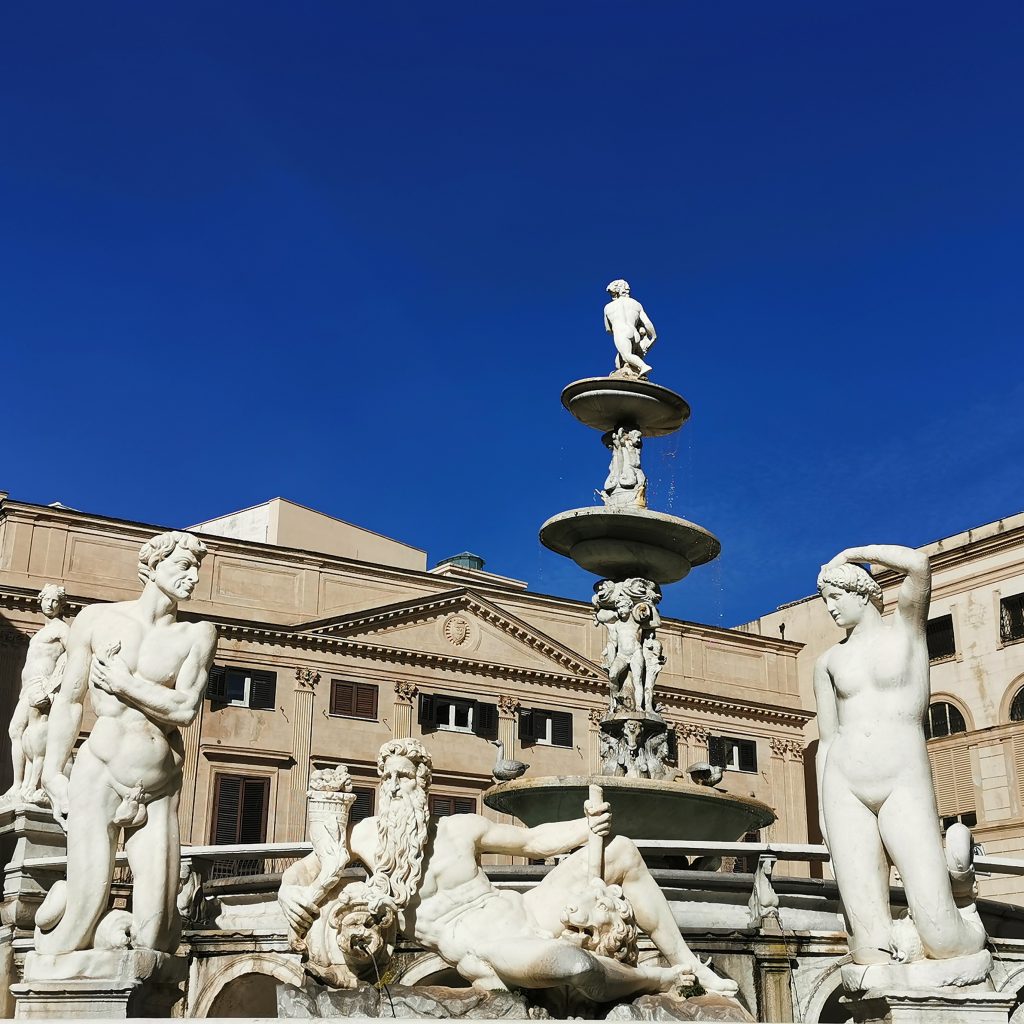
Palermo is a sharp-eyed city. It’s tough and scrawny and there are bombed out buildings from the Second World War that no one has thought to resurrect. The air can feel dusty and polluted, but everywhere you look there is a sense of a gracious past that lives on in the overblown architecture. It’s a mongrel mix of everything – Byzantine, Norman, Spanish, Arabic, Italian and all the east and west cultures that have ever criss-crossed it – yet still it remains resolutely itself.
Above all it is baroque (boy, is it baroque) and it’s going to hit you with everything it’s got: gilded cherubs; undulating marble, porphyry and serpentine; alabaster statues of goddesses frolicking in fountains and more chandeliers than Liberace. For these reasons it’s easy to get churched out here, but just roll with it. The interiors will make you laugh out loud, not because they’re funny but because you can’t believe this kind of craftsmanship is possible. There are too many to list, but Chiesa del Gesú in The Albergheria district will have you gawping helplessly at its splendour.
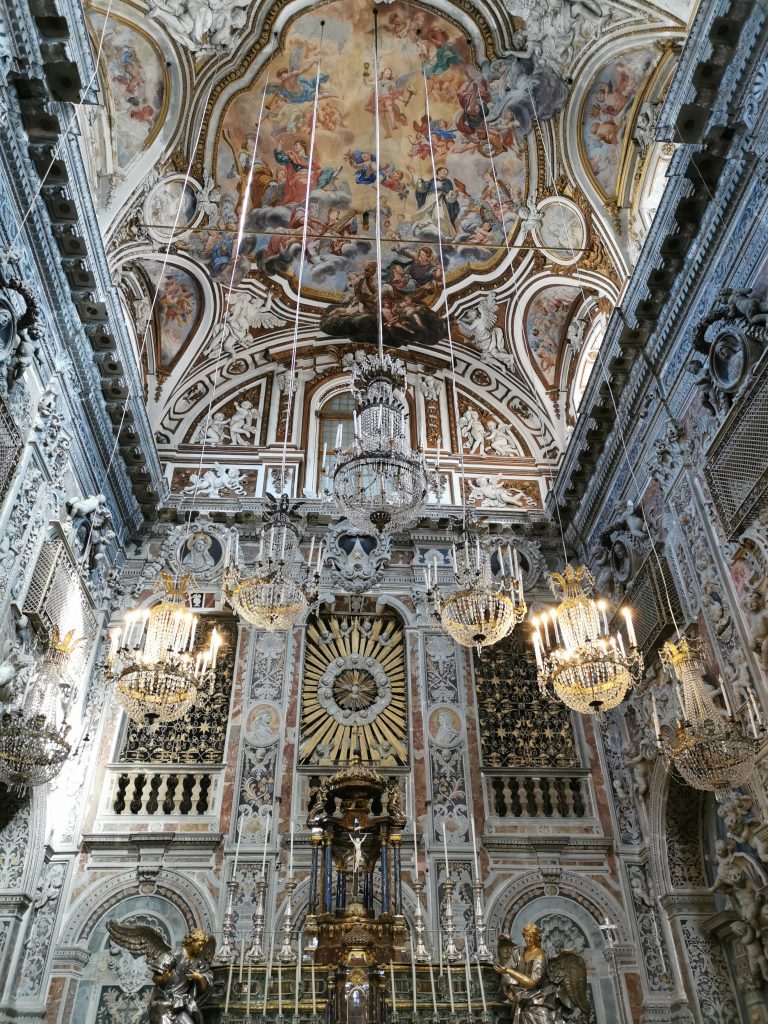
On Sunday we have breakfast at Piazza Bellini and take a tour of Chiesa Santa Caterina and the adjoining convent where we hit Peak Catholicism. Set around a stunning courtyard of orange, lemon and pomegranate trees, it’s a fascinating labyrinth of rooms where we encounter the remnants of nuns’ past lives, along with some really sinister dolls in glass domes and the jawbone of a female saint from the 11th century. There’s a choral sound track throughout and at the end of it a dolci (bakery) where someone makes you a tooth achingly sweet canollo to order. We love it all.
It’s still really quiet on the streets and not only are their hardly any tourists about, there’s hardly any Sicilians either. Shop keepers drum their fingers on counters and waiters stand idly around in black latex gloves hoping for some custom. The news here isn’t the virus, it’s what it’s doing to the economy. If Italians are meant to be the drama queens of Europe, compared to what is being dished up at home on our Twitter feeds, they seem pretty circumspect to us.
After a tour of the Teatro Massimo and a tantalising peek of the dancers rehearsing for next month’s production of Coppelia, Chris and I head for a spritz on the Piazza Verdi where we both make a shocking admission. Neither of us have ever seen The Godfather. Not one of them. (Writing this I’ve just googled the last scene where Al Pacino’s daughter gets shot on the theatre steps and blimey that face should have been worth an Oscar alone). We don’t see a lot of references to The Godfather out here, just the odd T-shirt in the markets and overall it is surprisingly untacky, apart from the women’s boutiques which are packed full of the glitzy and the frou-frou.
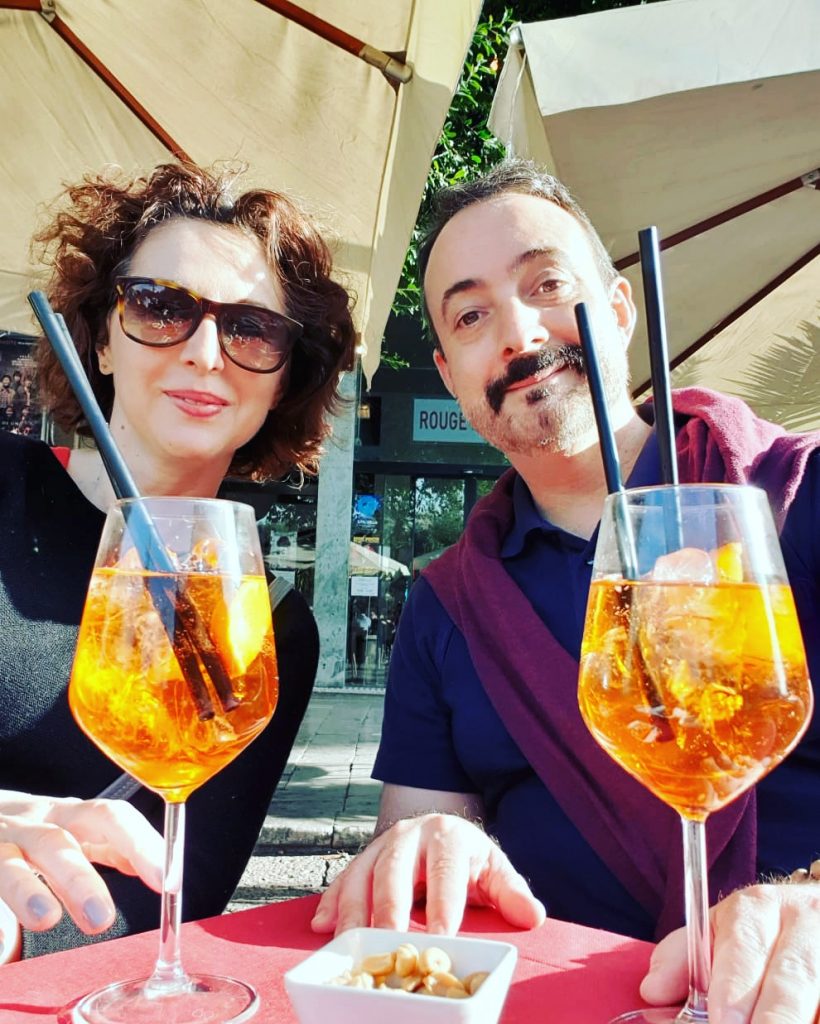
Walking along the Via della Libertá and suddenly, out of nowhere, there is a sea of humanity out to shop and be seen. The Sunday passegiata has commenced and this is the most amount of people we’ve encountered in 48 hours. It’s like someone has just sounded the all-clear siren and they’re exuberantly walking off their cabin fever.
Brits are thin on the ground here and the only time we hear an English accent is on our last day. We’re drinking coffee and watching two Pakistani boys playing cricket against the crumbling, chaotic backdrop of a disused palazzo which is probably the most Palermo thing you can imagine. Behind us a man in his 60s is having a pre-midday livener and complaining to his wife about ‘bureaucracy and unelected officials’ salaries’. I am instantly reminded of my biggest fear about Brexit. Being trapped on a tiny island with people such as these, condemned to a life of whinging mediocrity and no longer able to travel.
But for now we keep on keeping on, in the hope that one way or another our wings are not clipped. This is my third visit to Sicily and there will be more because finding my way into its dark heart will probably take a life-time. In the meantime, I will be self-isolating with Spaghetti alla Norma and Inspector Montalbano on IPlayer……
